

the Islands
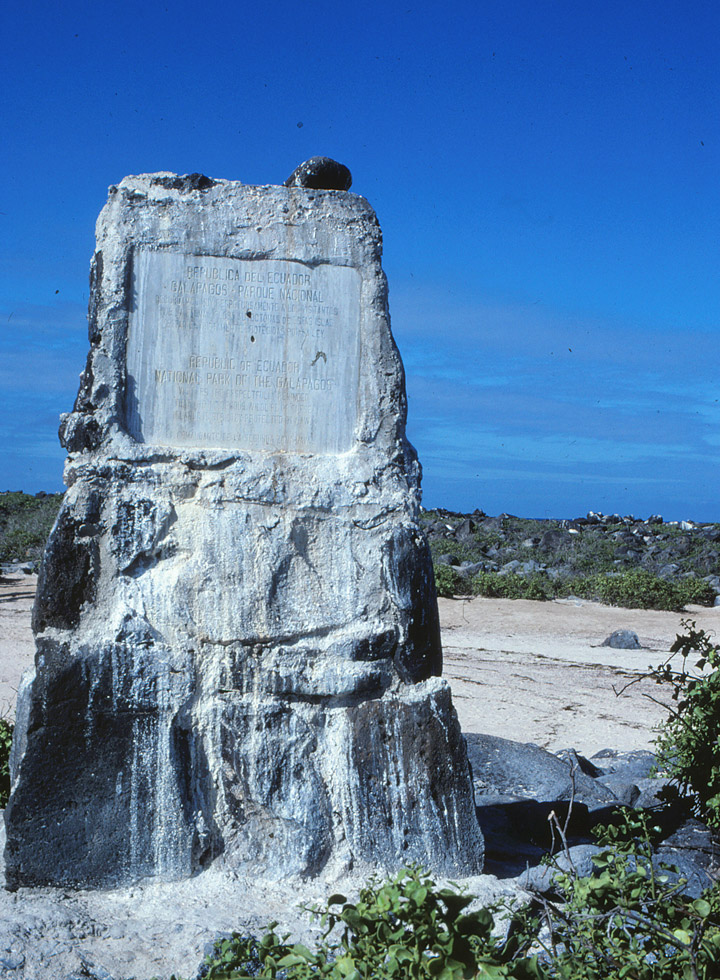
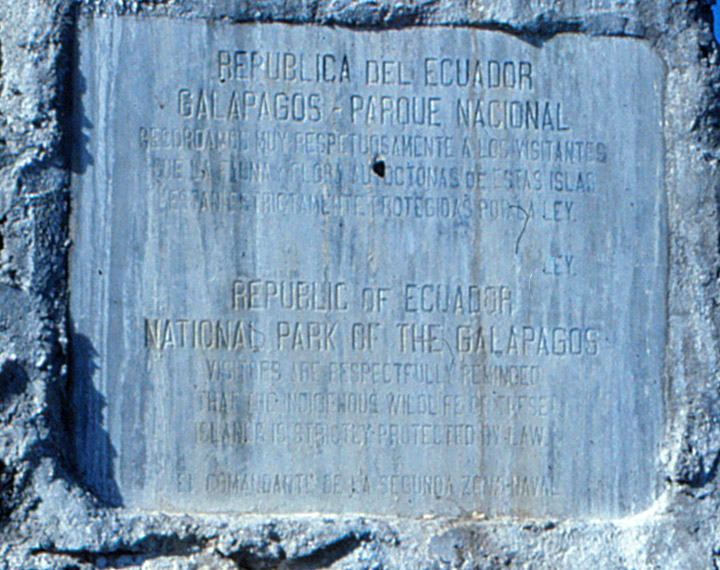
National Park of the Galapagos
European discovery of the Galápagos Islands occurred when Dominican Fray Tomás de Berlanga, the fourth Bishop of Panama, sailed to Peru to settle a dispute between Francisco Pizarro and his lieutenants. De Berlanga's vessel drifted off course when the winds diminished, and his party reached the islands on March 10, 1535. According to a 1956 study by Thor Heyerdahl and Arne Skjřlsvold, remains of potsherds and other artifacts from several sites on the islands suggest visitation by South American peoples prior to the arrival of the Spanish.
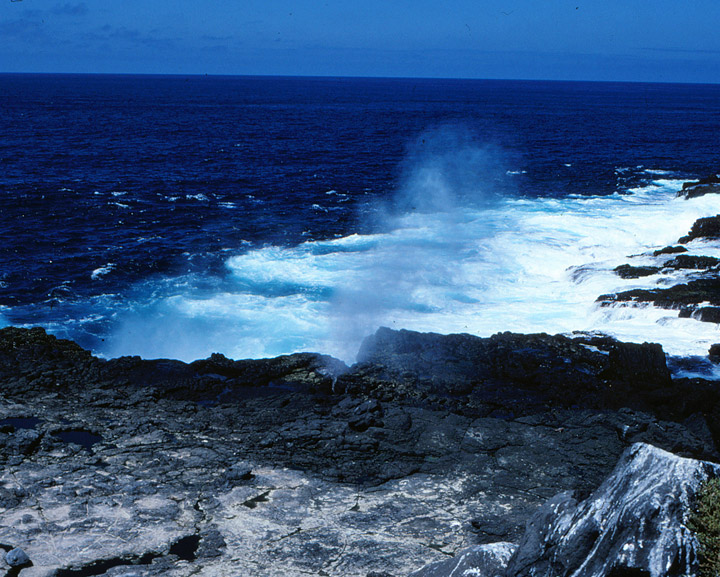
The islands first appeared on maps in about 1570 in those drawn by Abraham
Ortelius and Mercator. The islands were called "Insulae de los Galopegos"
(Islands of the Tortoises).
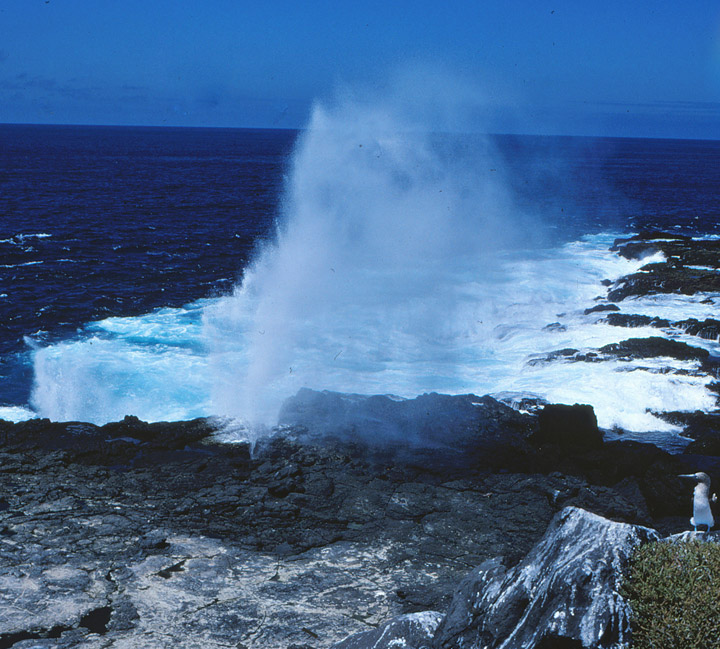
blow hole
The first English captain to visit the Galápagos Islands was Richard Hawkins, in 1593. Until the early 19th century, the archipelago was often used as a hideout by mostly English pirates who pilfered Spanish galleons carrying gold and silver from South America to Spain.
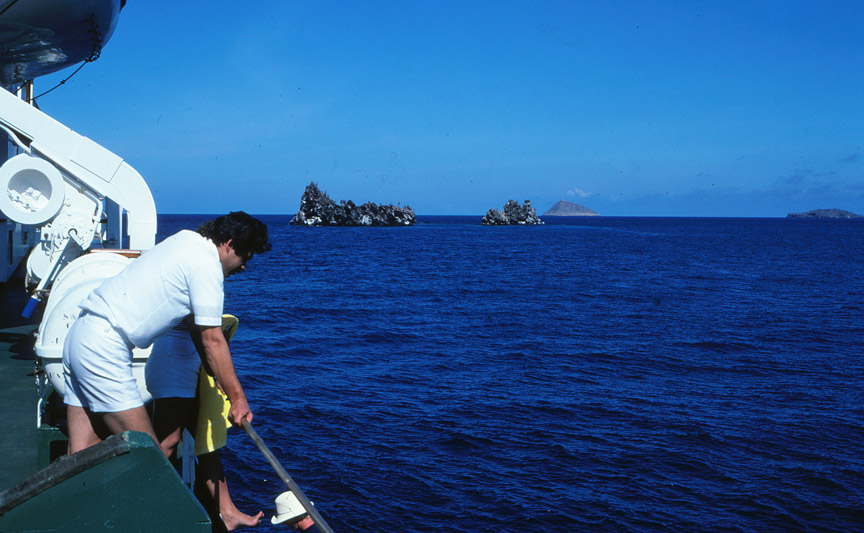
volcanic outcrops
Alexander Selkirk, whose adventures in Juan Fernández Islands inspired Daniel Defoe to write Robinson Crusoe, visited the Galápagos in 1708 after he was picked up from Juan Fernández by the privateer Woodes Rogers. Rogers was refitting his ships in the islands after sacking Guayaquil.

a group of the limited visitors
The first scientific mission to the Galápagos arrived in 1790 under the leadership of Alessandro Malaspina, a Sicilian captain whose expedition was sponsored by the King of Spain. However, the records of the expedition were lost.
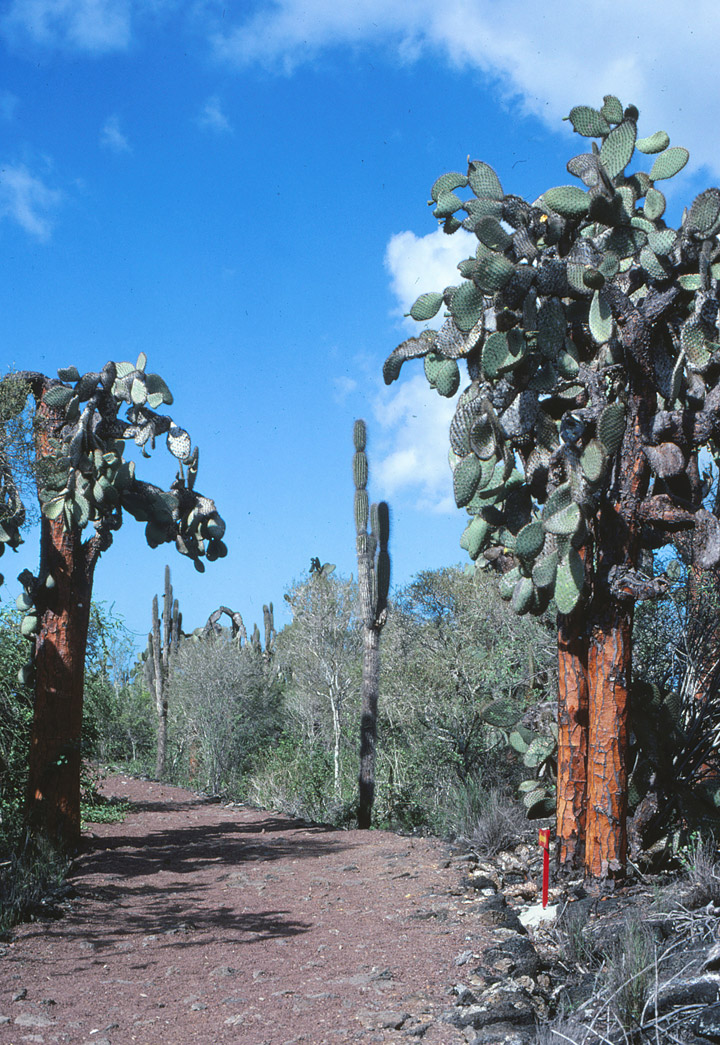
In 1793, James Colnett made a description of the flora and fauna of Galápagos
and suggested that the islands could be used as base for the whalers operating
in the Pacific Ocean. He also drew the first accurate navigation charts of the
islands. Whalers killed and captured thousands of the Galápagos tortoises to
extract their fat. The tortoises could also be kept on board ship as a means of
providing of fresh protein as these animals could survive for several months on
board without any food or water. The hunting of the tortoises was responsible
for greatly diminishing, and in some cases eliminating, certain species. Along
with whalers came the fur-seal hunters who brought the population of this animal
close to extinction.

Ecuador annexed the Galápagos Islands on February 12, 1832, naming it
Archipelago of Ecuador. This was a new name that added to several names that had
been, and are still, used to refer to the archipelago. The first governor of
Galápagos, General José de Villamil, brought a group of convicts to populate the
island of Floreana and in October 1832 some artisans and farmers joined.
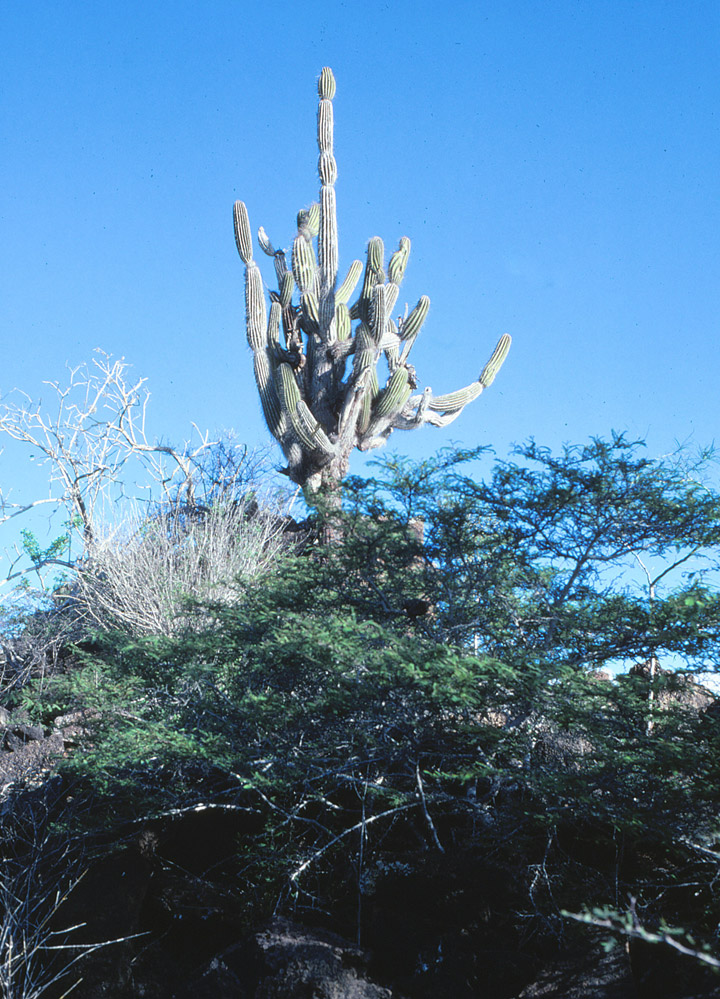
The voyage of the Beagle brought the survey ship HMS Beagle under captain Robert
FitzRoy to the Galápagos on September 15, 1835 to survey approaches to harbors.
The captain and others on board including his companion the young naturalist
Charles Darwin made a scientific study of geology and biology on four of the
thirteen islands before they left on October 20 to continue on their
round-the-world expedition. Darwin noticed that the Finches differed between
islands, and the governor of the prison colony on Charles Island told him that
tortoises differed from island to island. Towards the end of the voyage Darwin
speculated that these facts might "undermine the stability of Species". When
specimens of birds were analyzed on his return to England it was found that many
apparently different kinds of birds were species of finches which were also
unique to islands. These facts were crucial in Darwin's development of his
theory of natural selection explaining evolution, which was presented in The
Origin of Species.
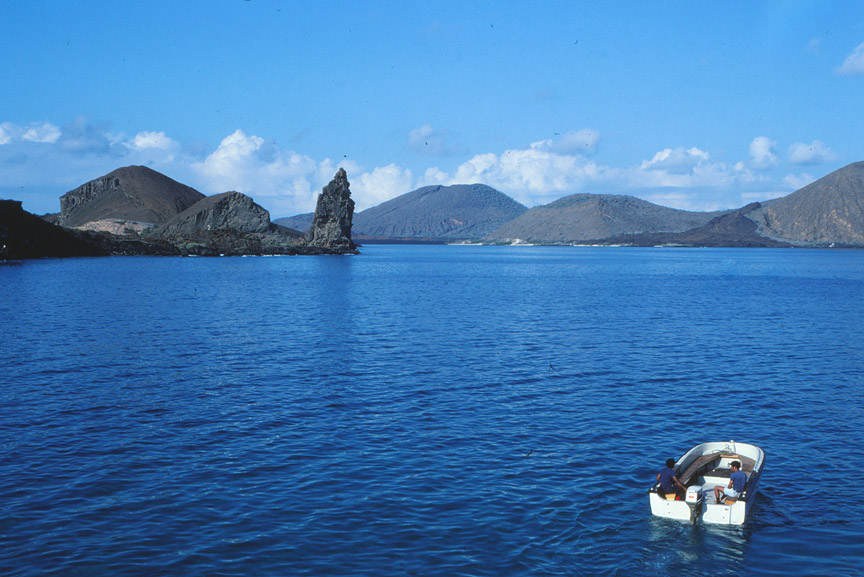
José Valdizán and Manuel Julián Cobos tried a new colonization, beginning the
exploitation of a type of lichen found in the islands (Roccella portentosa) used
as a coloring agent. After the assassination of Valdizán by some of his workers,
Cobos brought from the continent a group of more than a hundred workers to San
Cristóbal island and tried his luck at planting sugar cane. He ruled in his
plantation with an iron hand which lead to his assassination in 1904. Since 1897
Antonio Gil began another plantation in Isabela island.

Over the course of a whole year, from September 1904, an expedition of the
Academy of Sciences of California, led by Rollo Beck, stayed in the Galápagos
collecting scientific material on geology, entomology, ornithology, botany,
zoology and herpetology. Another expedition from that Academy was done in 1932
(Templeton Crocker Expedition) to collect insects, fish, shells, fossils, birds
and plants.
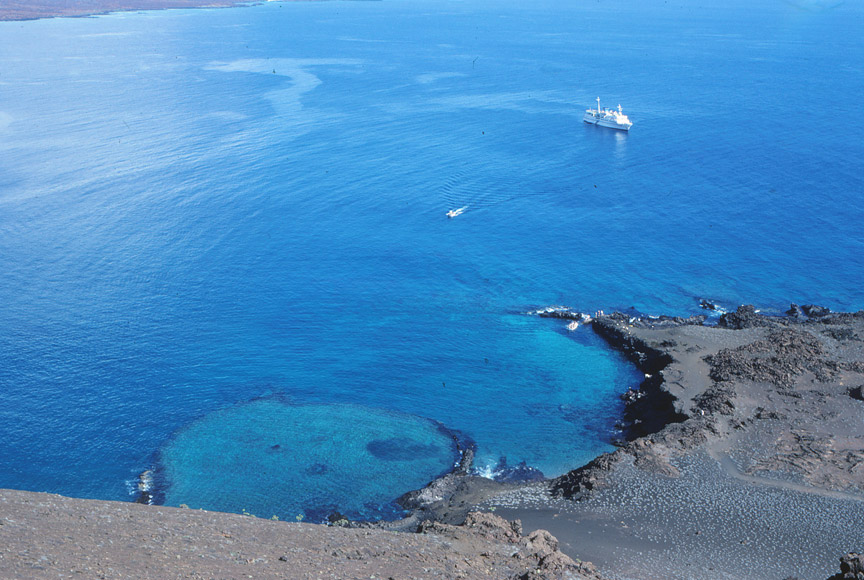
During WWII Ecuador authorized the United States to establish a naval base in
Baltra island and radar stations in other strategic locations.
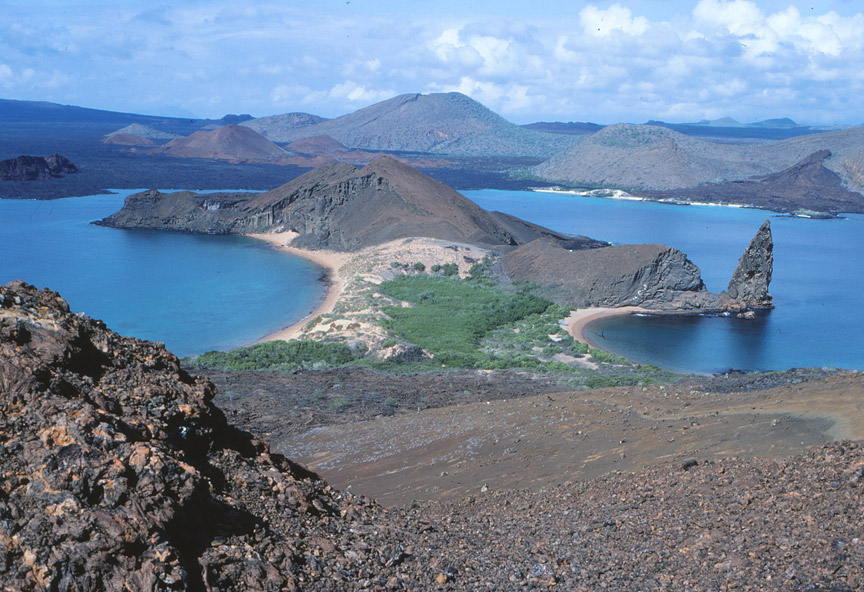
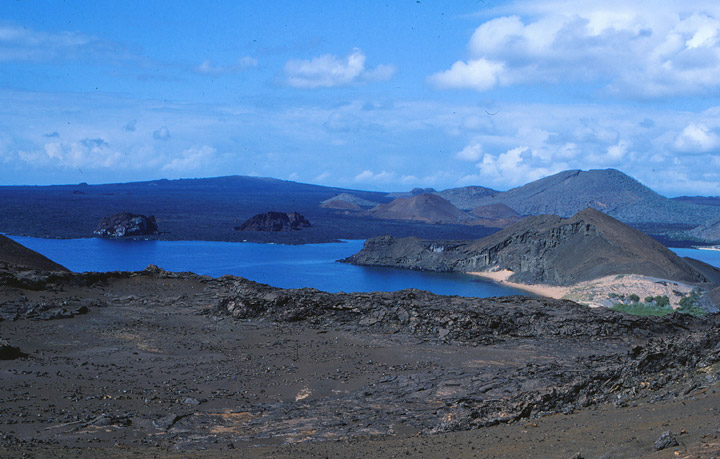


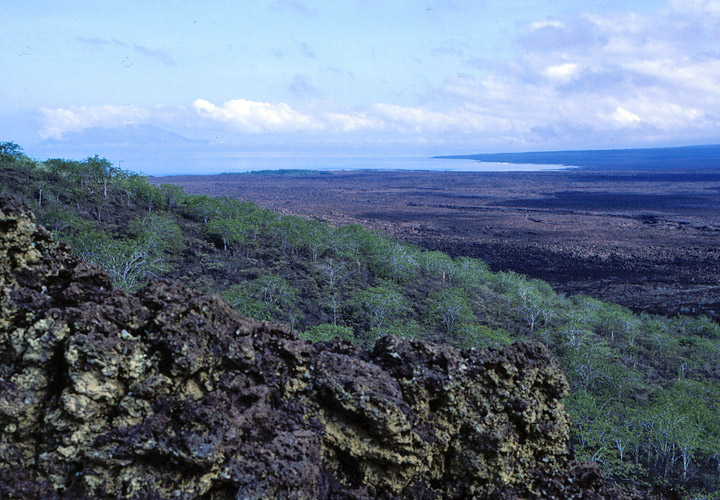
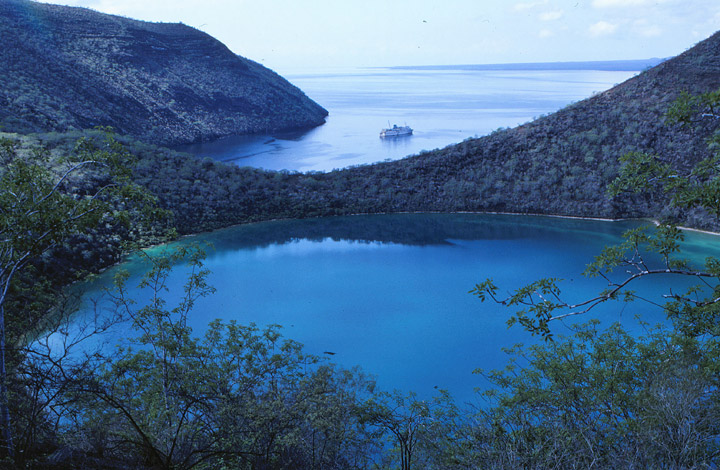
lake above the sea
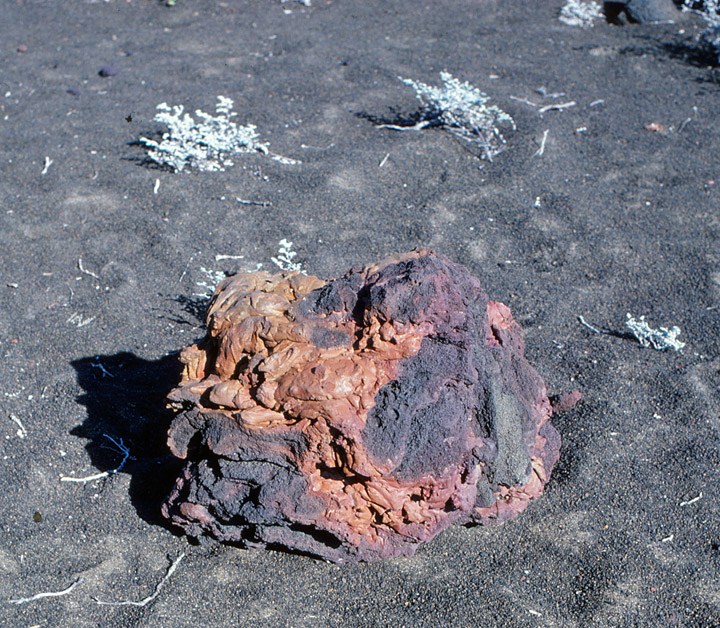
volcanic rock
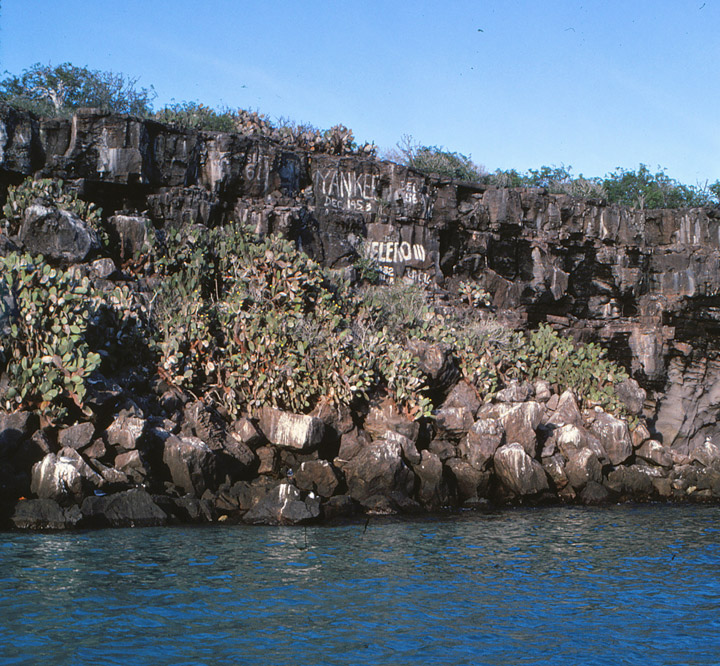
cliff markings left by early visiting vessels
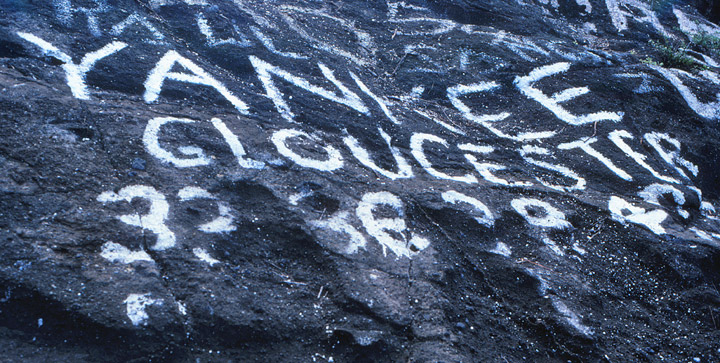
Santa Cruz Island
Galápagos
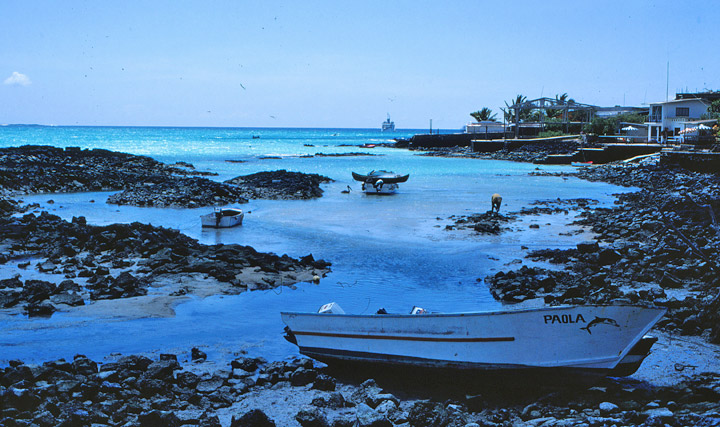
Santa Cruz Island is one of the Galápagos Islands with an area of 986 km˛ and a
maximum altitude of 864 metres.
Situated in the centre of the archipelago, Santa Cruz Canton is the second
largest island after Isabela. Its capital is Puerto Ayora, the most populated
urban centre in the Galapagos Islands. On Santa Cruz there are some small
villages, whose inhabitants work in agriculture and cattle raising. This island
is a large dormant volcano. It is estimated that there were eruptions around a
million and a half years ago.
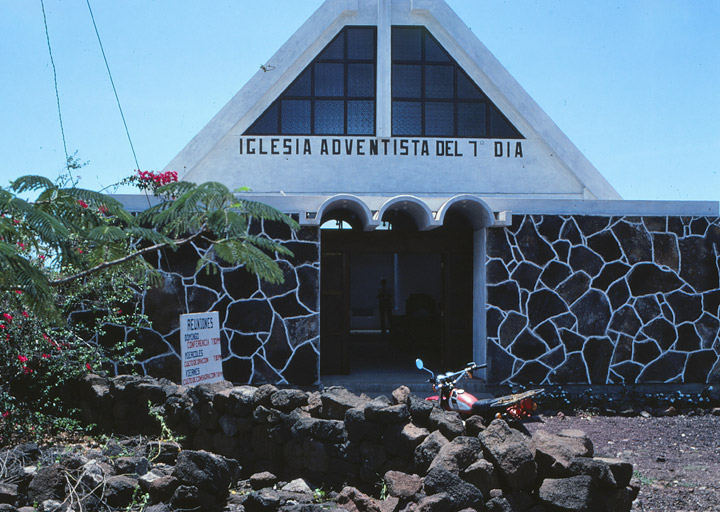
church
As a testimony to its volcanic history there are two big holes formed by the collapse of a magma chamber: Media Luna and Los Gemelos.
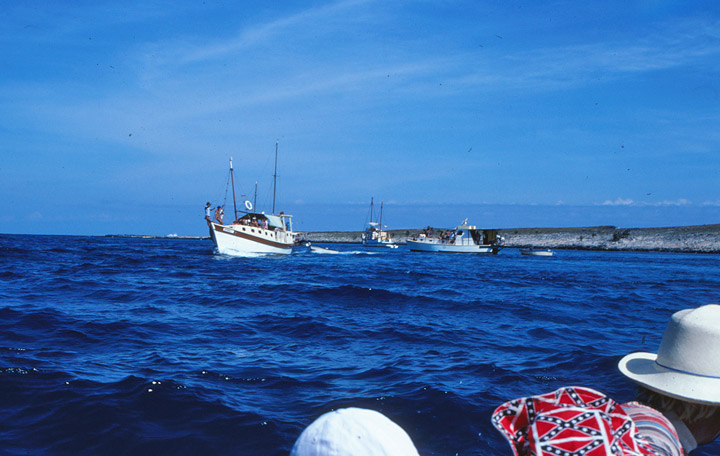
Named after the Holy Cross, its English name (Indefatigable) was given after a
British vessel (HMS Indefatigable). Santa Cruz hosts the largest human
population in the archipelago at the town of Puerto Ayora.
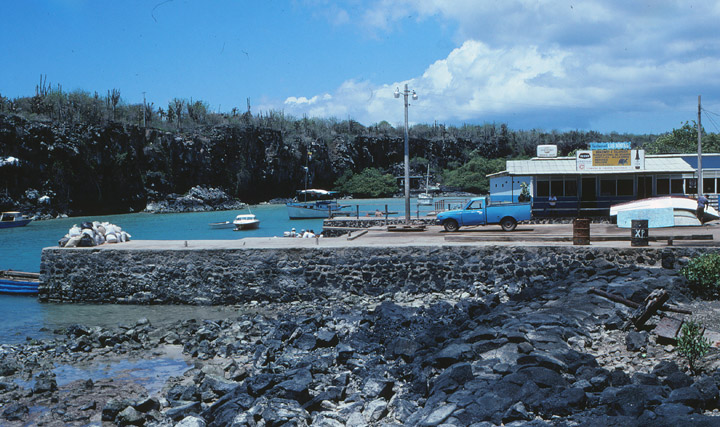
The Charles Darwin Research Station and the headquarters of the Galápagos
National Park Service are located here. The GNPS and CDRS jointly operate a
tortoise breeding center where these chelonians are prepared to be reintroduced
to their natural habitat. The Highlands of Santa Cruz offer an exuberant
vegetation and are famous for the lava tunnels. Large populations of Giant
Tortoises are found here. Black Turtle Cove is site surrounded by mangrove which
sea turtles, rays, and small sharks sometimes use as a mating area. Cerro Dragón,
known for its flamingo lagoon, is also located here, and along the trail one may
see Galapagos Land Iguanas foraging.
Text from Wikipedia
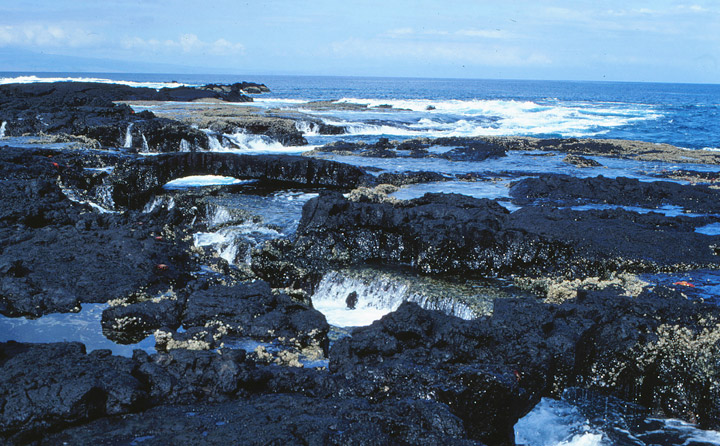
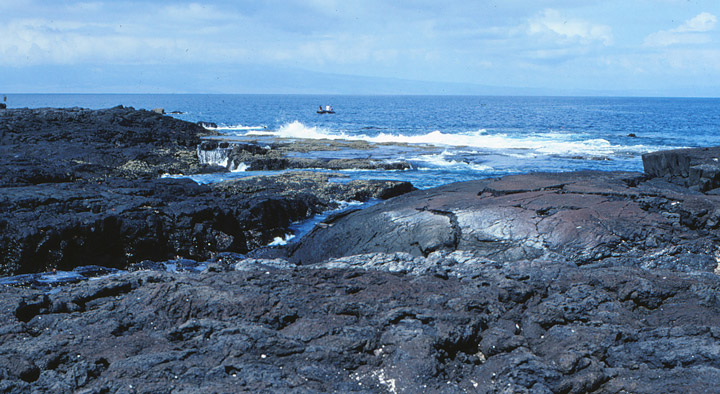
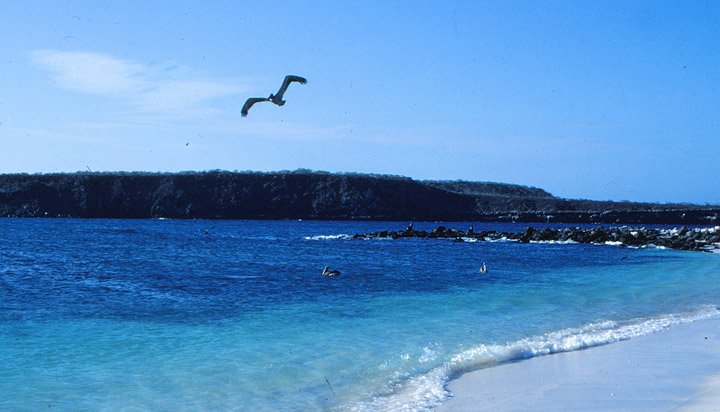
Return to Galapagos Island page